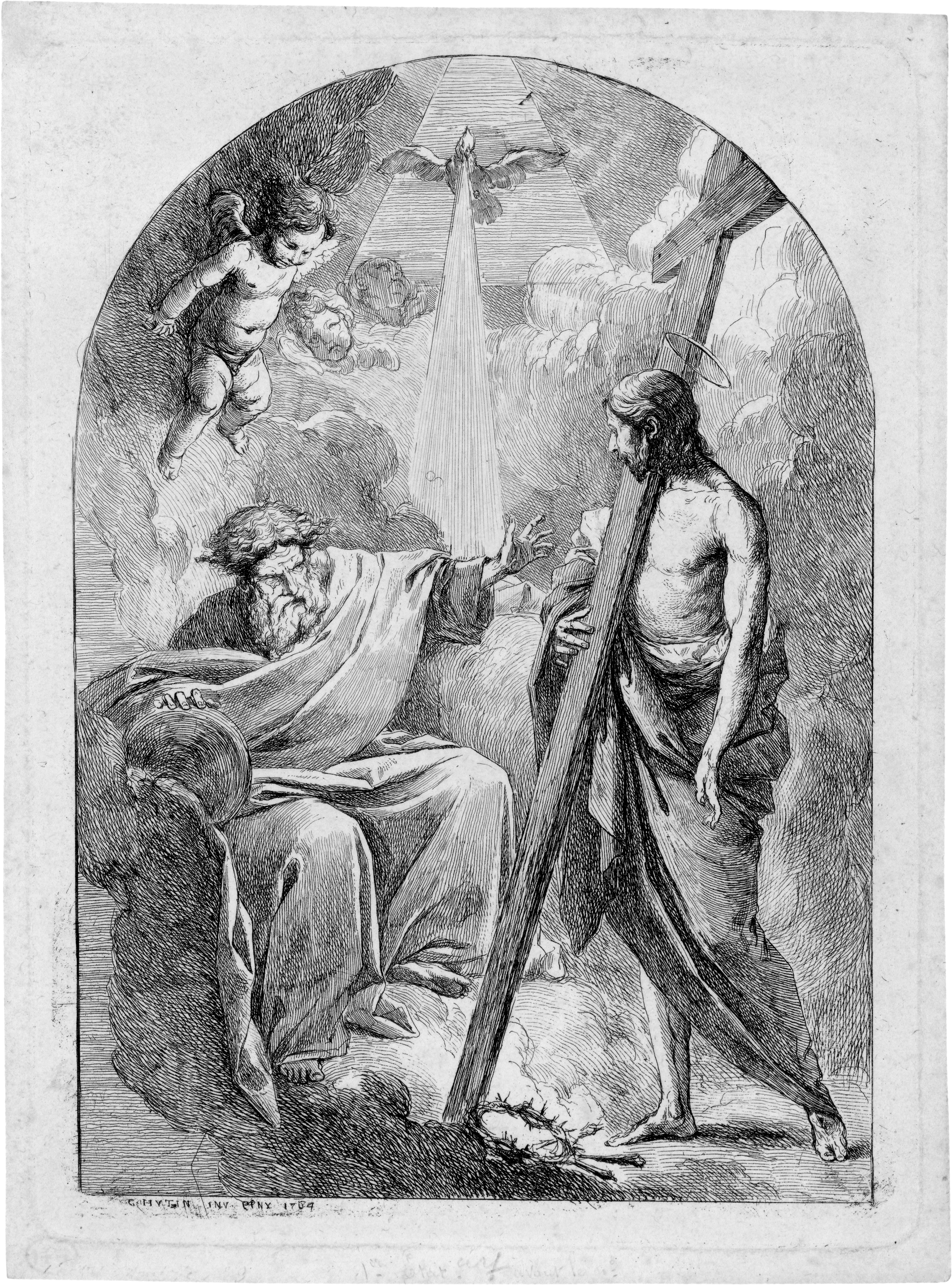Loading the page ...
Charles François Hutin
(1715 Paris – 1776 Dresden)
The Saviour Returning to God the Father. Etching. 23.5 x 17.5 cm. 1764. Inventaire du Fonds Français 14; Baudicour 14 I (of II).
The sculptor, painter and printmaker Charles Hutin was first introduced to painting by François Lemoine in Paris. In 1737 he went as a pensionnaire to the Académie de France in Rome, where he was to remain until 1744. While there he devoted himself mainly to sculpture under the guidance of Sébastien Slodtz. After his return to Paris he was admitted to full membership of the Académie royale in 1747. Shortly afterwards, in 1748, Hutin had a surprising stroke of good fortune when he went, together with his brother, Pierre, to Dresden to enter the service of the Elector August II of Saxony. He was to work in the Saxon royal capital until his death. One of Hutin’s first tasks was to collaborate on the compilation initiated by C. H. von Heinecken under the title Recueil d’Estampes d’après les plus célèbres tableaux de la Galerie Royale de Dresde, whose first volume appeared in 1753. Hutin did the preliminary drawings for this extensively illustrated reference work, which were transferred to the printmaking medium by a team of well-known French reproductive engravers. Subsequently Hutin distinguished himself mainly as a painter. In 1762 he was appointed director of the old Dresden Painting Academy and also “Master Academician and Historical Painter”. After the founding of the new Academy in 1764 he occupied a leading position in this institution until his death. While in Dresden, Hutin produced a small printed oeuvre of his own, which he published in 1763 under the title Recueil de différents sujets composés et gravés par Charles Hutin à Dresde.
This beautiful, impressive sheet is undoubtedly one of the finest works in his graphic oeuvre. Using a relatively small format, Hutin achieves great compositional density and scenic drama. The awe-inspiring figure of God the Father, sat on a throne of clouds with the globe in his right hand, turns with a powerful gesture towards the ascetic-looking Saviour, who carries the cross as a symbol of his martyrdom. The scene is bursting with inner energy and full of Baroque pathos.
Hutin’s sophisticated, vigorous and varied etching technique is of the utmost graphic delicacy and produces very subtle, finely gradated contrasts between the light and dark areas. A superb, nuanced early impression with margins, before the number. Minor ageing, otherwise in excellent condition. From the collection of François Heugel (Lugt 3373).
Contact us for further information